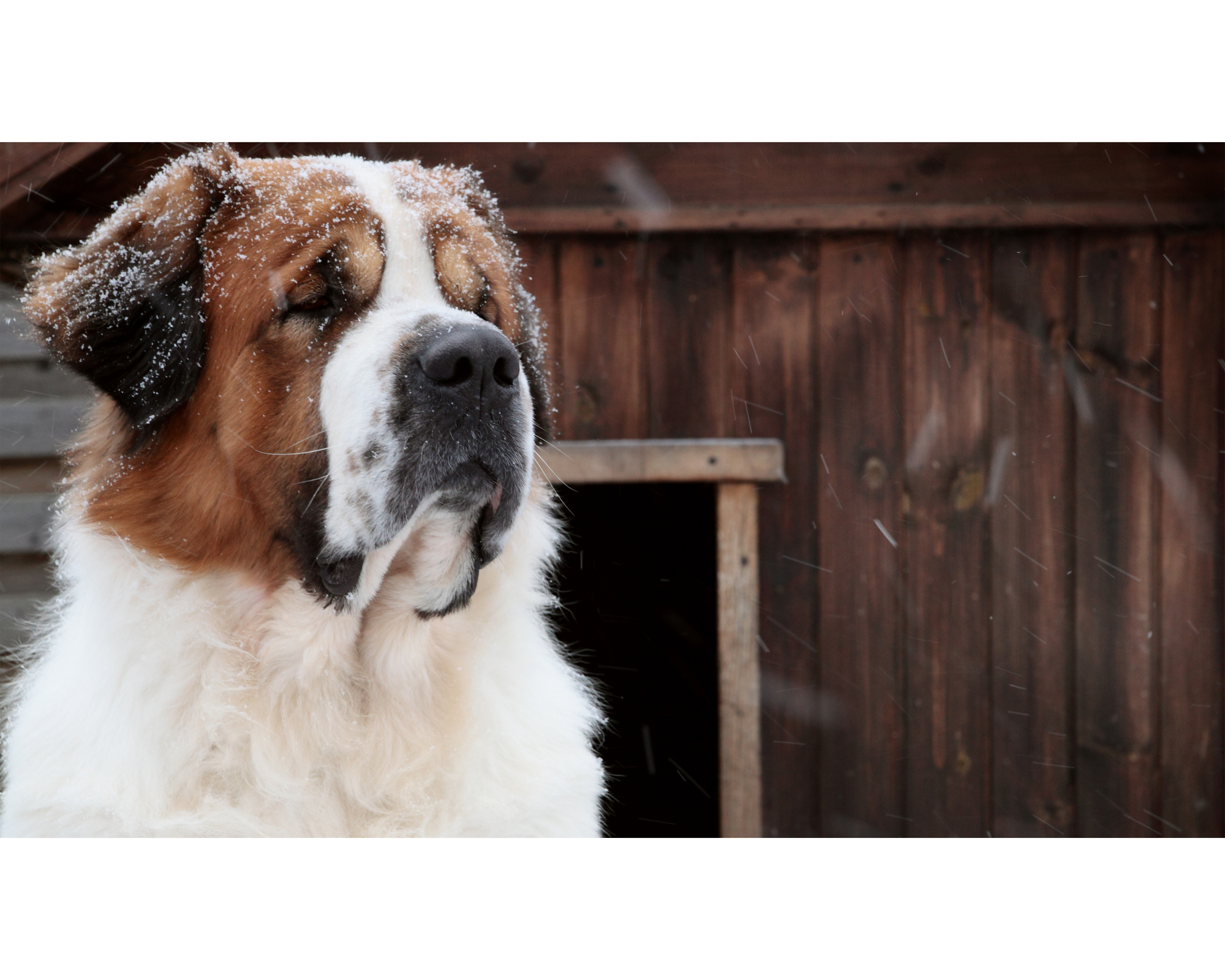

Born for the Cold: Why Saint Bernards Thrive in Winter Weather
When you think of a dog built for winter, the Saint Bernard is one of the first breeds that comes to mind. With their massive size, thick coats, and history as alpine rescue dogs, these gentle giants don’t just survive in the snow—they thrive in it. But what makes Saint Bernards so well-suited for cold weather, and why do they seem to love the snow so much? Let’s dive into the fascinating traits that make this breed a true winter warrior.
A History of Alpine Rescues
Saint Bernards were bred for a purpose—helping stranded travelers in the treacherous, snow-covered passes of the Swiss Alps. Dating back hundreds of years, these dogs were used by monks at the Great St. Bernard Hospice, where they patrolled the mountain paths, searching for lost or injured travelers. Their keen sense of smell, incredible endurance, and natural affinity for cold weather made them the perfect rescue companions.
These legendary rescue dogs would locate stranded travelers, clear paths through deep snow, and provide warmth with their thick fur and body heat. Some were even trained to carry small barrels of brandy to warm up those in distress (though that’s more myth than reality). Regardless, their ability to withstand freezing conditions was—and still is—undeniable.
Built for the Cold
Saint Bernards have several physical traits that allow them to excel in cold temperatures:
🐾 Thick Double Coat – Their dense undercoat keeps them insulated, while the longer outer coat helps repel snow and moisture. This natural layering system traps warmth close to their bodies, allowing them to stay comfortable even in freezing temperatures.
🐾 Large Size and Sturdy Build – These dogs can weigh anywhere from 120 to 180 pounds, which means they don’t get cold as quickly as smaller breeds. Their sturdy bodies also allow them to plow through deep snow with ease.
🐾 Massive Paws for Snow Navigation – Their large, wide paws act like natural snowshoes, distributing their weight and preventing them from sinking too deeply into the snow. This is the same principle that allows some wild animals, like lynxes, to move across snowy terrain efficiently.
🐾 High Tolerance for Freezing Temps – Unlike short-haired breeds that struggle in winter, Saint Bernards are built to be out in the elements. Their thick skin and fur allow them to regulate their body temperature effectively in snowy conditions.
Why Saint Bernards Love the Snow
If you own a Saint Bernard, you’ve probably noticed their enthusiasm when the first snowfall hits. Here’s why these gentle giants seem to adore winter weather:
❄️ Snow Play Is Built Into Their Instincts – Their history as mountain rescue dogs means that trudging through the snow feels natural. They were bred for this terrain, and many still have an innate desire to work and explore in it.
❄️ Cooling Off – Believe it or not, Saint Bernards are prone to overheating in warmer months. They actually prefer the cold and are much more comfortable playing in the snow than lounging in the summer sun.
❄️ Pure Fun – If you’ve ever watched a Saint Bernard bound through fresh powder, you know they treat the snow like a giant playground. Rolling, digging, and flopping down to cool off—these dogs embrace winter with pure joy.
Keeping Your Saint Bernard Safe in Winter
Even though they’re built for the cold, there are still precautions to take when letting your Saint Bernard enjoy winter weather:
✅ Monitor for Ice Accumulation – Snow and ice can get stuck between their paw pads, causing discomfort. Check their paws after time outside and consider using a protective balm.
✅ Avoid Overexertion – These big dogs love to play, but deep snow can be exhausting. Make sure they take breaks and stay hydrated.
✅ Watch for Signs of Hypothermia – While rare in Saint Bernards, extreme conditions can still lead to hypothermia. If they seem lethargic, start shivering, or have pale gums, bring them inside immediately.
✅ Keep an Eye on Joint Health – Snow and ice can be slippery, increasing the risk of falls. Since giant breeds are already prone to joint issues, ensure they have safe footing when out in icy conditions.
Winter Adventures with Your Saint Bernard
If you have a Saint Bernard, winter is the perfect season to get outside and enjoy activities designed for them. Some fun cold-weather adventures include:
🏔️ Hiking in Snowy Trails – They’ll love trudging alongside you, taking in all the winter scents.
🐾 Pulling a Sled – With the right training and precautions, Saint Bernards can enjoy pulling kids or light loads in the snow—a fun throwback to their working dog roots!
❄️ Playing Fetch with Snowballs – It won’t last long, but most Saint Bernards love chasing and catching tossed snow.
🚶 Casual Winter Walks – Even a simple walk in the crisp air can be enjoyable for them, especially if you let them roll in the snowbanks along the way!
Embracing the Cold with Your Saint Bernard
Winter is a Saint Bernard’s season, and if you have one, you know how much they relish the snow. Their history, physical traits, and love for cold weather make them the ultimate winter companion. So, bundle up, grab the leash, and let your gentle giant enjoy the snow as nature intended!
Does your Saint Bernard love the winter? Share your favorite snowy adventures in the comments! ❄️🐾
Share:
3 comments
-
Very very good article and informative. They didnt carry alcohol around their necks thougj!!!!! Thank you for article.
Penny Soto on
-
Carrying barrels around their neck with brandy in it is a myth. Get your facts straight pkease. Thank you
Nene Soto on
-
great breed
brenda on
